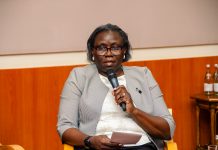By Thuku Kariuki
Kenya is set to once again take the global stage as a hub of conservation excellence when it hosts the Second International Wildlife Scientific Conference from 23rd to 25th September 2025, in Naivasha.
Organized by the Wildlife Research and Training Institute (WRTI), the gathering builds on the success of the inaugural event in 2023, which drew over 300 participants and featured 127 groundbreaking scientific papers. This year, the conference takes an even bolder step under the theme: “Innovations in Wildlife Conservation Science and Practice for Socioeconomic Development.”
The forum will bring together researchers, policymakers, conservationists, community leaders, and international partners for three days of vibrant exchange, as they chart new pathways for safeguarding biodiversity while promoting human well-being. From keynote speeches and plenary debates to poster sessions and exhibitions, the program is designed to spark dialogue and inspire solutions that can be applied across Africa and beyond.
The opening ceremony will be graced by the Head of Public Service, Felix Koskei, alongside Hon. Rebecca Miano, Tourism and Wildlife Cabinet Secretary. Their attendance, organizers say, highlights the government’s strong commitment to evidence-based policy, innovation, and keeping wildlife conservation at the heart of Kenya’s national development agenda.
The conference will explore a wide range of subthemes including wildlife population dynamics, disease management, climate change, aquatic ecosystems, governance, and the use of science to fight illegal wildlife trade. Beyond academic exchange, the expected outcomes—scientific proceedings, policy briefs, and new strategic partnerships—are designed to shape both Kenya’s conservation agenda and global biodiversity efforts in an era of mounting climate pressures.
WRTI Director, Dr. Patrick Omondi, underscored the importance of the gathering, saying: “Science is at the heart of effective conservation. This conference will provide the evidence, innovation, and partnerships needed to shape policies that balance biodiversity conservation with socioeconomic growth.”
Anchored within the framework of Kenya’s National Wildlife Strategy 2030 and aligned to the Sustainable Development Goals (SDGs), the conference signals Kenya’s enduring leadership in conservation science. As the world grapples with climate change, habitat loss, and human-wildlife conflict, Naivasha will become the meeting point where ideas converge to protect wildlife not only as part of ecological heritage but also as a cornerstone of cultural identity and economic prosperity.






